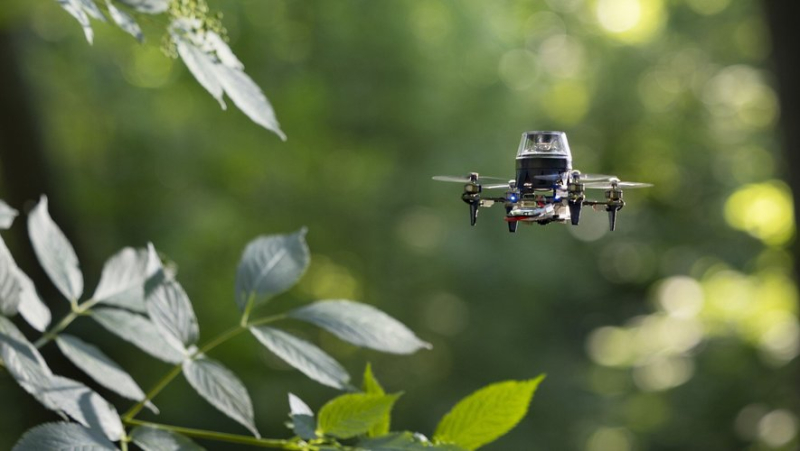Omnidirectional camera, step counting… how ants inspire the autonomous drones of tomorrow ?

This drone locates itself in space to automatically return to its starting point. Courtesy of Delft University of Technology
the essential Researchers from the Technical University of Delft, in the Netherlands, were inspired by the behavior of ants to develop a new navigation technique adapted to light drones. The idea is that these machines can travel great distances and automatically find their way, without GPS, but by knowing their environment.
Ants are able to find their way back using biological mechanisms, which directly inspired these scientists. These insects actually visually recognize their surroundings while counting their steps, allowing them to return to their starting point quite easily. The researchers wanted to apply these principles to small drones using algorithms requiring very little calculation and memory.
Omnidirectional camera
In the end, the tester drone, called CrazyFlie, weighs only 56 grams. But thanks to its omnidirectional camera, it managed to travel up to 100 meters with only 1.16 KB of memory. All visual processing of route recognition is carried out using an integrated circuit, thus demonstrating the feasibility of this autonomous navigation technique for such small and frail robots.
In the future, such robots could be used for inventory monitoring or even the detection of various leaks. Indeed, their small size and lightness allow them to navigate in restricted or even inaccessible spaces for humans. But so far, they also have limited resources, making autonomous navigation difficult. All of this work was published in Science Robotics.
This is not the first time that insects have inspired researchers in new technologies. Today, in robotics, the trend is more than ever towards “biorobots”, inspired by animal behavior. This is how in Japan, tiny robots in the shape of cockroaches were created with the aim of moving in any natural environment inaccessible to humans, to inspect the quality of the environment using different sensors placed on them. Ditto in the United States, where robots comparable to flying chips have been planted in order to monitor the evolution of pollution or certain diseases in very specific regions.




